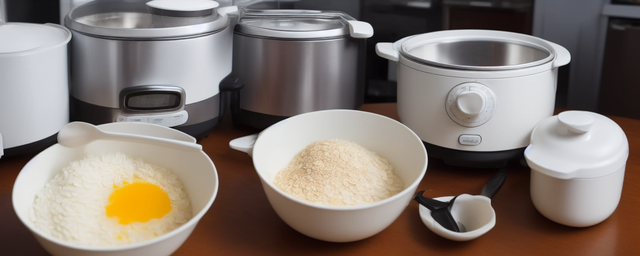
预约电饭锅煮粥危害
原|2024-04-26 00:20:47|浏览:34
Booking an electric rice cooker to cook porridge may seem convenient, but it can pose several risks and hazards. Here are some of the potential dangers associated with this practice:
1. **Fire Hazard**: Leaving an electric rice cooker unattended for an extended period of time while cooking porridge can increase the risk of a fire breaking out. If the porridge boils over or if there is a malfunction in the cooker, it could lead to a fire in the kitchen.
2. **Overheating**: Cooking porridge in a rice cooker for too long can cause the appliance to overheat. This can not only damage the cooker but also pose a risk of starting a fire or causing burns if touched accidentally.
3. **Food Safety**: Porridge requires a longer cooking time compared to rice, and booking a rice cooker for this purpose may not be ideal for maintaining food safety standards. The prolonged cooking time can lead to bacterial growth in the porridge, especially if it is left sitting in the cooker for an extended period after cooking.
4. **Electrical Safety**: Booking an electric appliance like a rice cooker for a task it is not specifically designed for can put a strain on the electrical system. This can increase the risk of short circuits, electrical shocks, or other electrical hazards.
5. **Warranty Concerns**: Using an electric rice cooker for purposes other than cooking rice may void the warranty of the appliance. If any damage occurs while cooking porridge in the rice cooker, it may not be covered under the warranty, leading to additional costs for repair or replacement.
6. **Inefficient Cooking**: Electric rice cookers are designed to cook rice efficiently and evenly. Using them to cook porridge may not result in the desired texture or consistency, as the cooking settings are optimized for rice rather than porridge.
In conclusion, while it may seem convenient to book an electric rice cooker to cook porridge, it is important to consider the potential risks and hazards involved. It is advisable to use appliances for their intended purposes to ensure safety, efficiency, and longevity.
猜你喜欢
- 茶的分类及代表品种
- 六大茶类的代表名茶分别有
- 茶的类型和代表
- 六大茶叶的分类及产地
- 庙的分类及代表
- 藻的分类及其代表
- 茶的分类及代表茶品特点
- 茶的分类及代表茶
- 简述茶类的分类及其代表性名茶
- 六大茶类的分类及代表茶
- 动物分类及代表
- 糖的分类及代表
- 茶的分类及代表茶叶
- 茶的分类及代表图
- 茶的分类及代表作
- 茶器按质地的分类及代表茶器
- 茶的分类及代表名茶教学设计
- 简述茶的分类及代表性名茶
- 请写出乌龙茶的分类及代表茶
- 法国雅文邑白兰地系列
- 雅文邑白兰地介绍
- 1952年法国雅文邑白兰地
- 法国雅玛邑白兰地
- 纽波利顿獒
- 法国犬品种
- 南非獒犬的优缺点
- 波尔多獒犬寿命
- 波兰狩猎犬
- 波尔多犬和罗威纳犬对比
- 波尔多犬和杜高对比
- 世界十大凶犬
- 护卫犬排行榜前十名
- 大红袍怎么泡效果好
- 大红袍怎么泡不开
- 大红袍怎么泡茶
- 大红袍怎么泡出来没颜色
- 大红袍怎么泡不苦
- 大红袍怎么泡多久
- 大红袍怎么泡才正确的特点
- 大红袍怎么泡没有柴味儿
- 大红袍怎么泡放多少合适
- 花香大红袍怎么泡
- 大红袍怎么泡茶好
- 大红袍是怎么泡的
- 大红袍怎么泡水好喝
- 大红袍用玻璃杯怎么泡
- 大红袍怎么泡味道浓一些
- 十大排名果花茶
- 十大花茶组合排名
- 十大花茶品种大全
- 十大花茶功效
- 十大花茶销量排行榜
- 十大花茶有哪些
- 十大花茶品种
- 十大花茶推荐
- 十大花卉排行榜
- 十大花卉
- 十大花茶调理内分泌
- 九五至尊秦昊明月关山
- 红茶冲泡工艺
为你推荐






































































